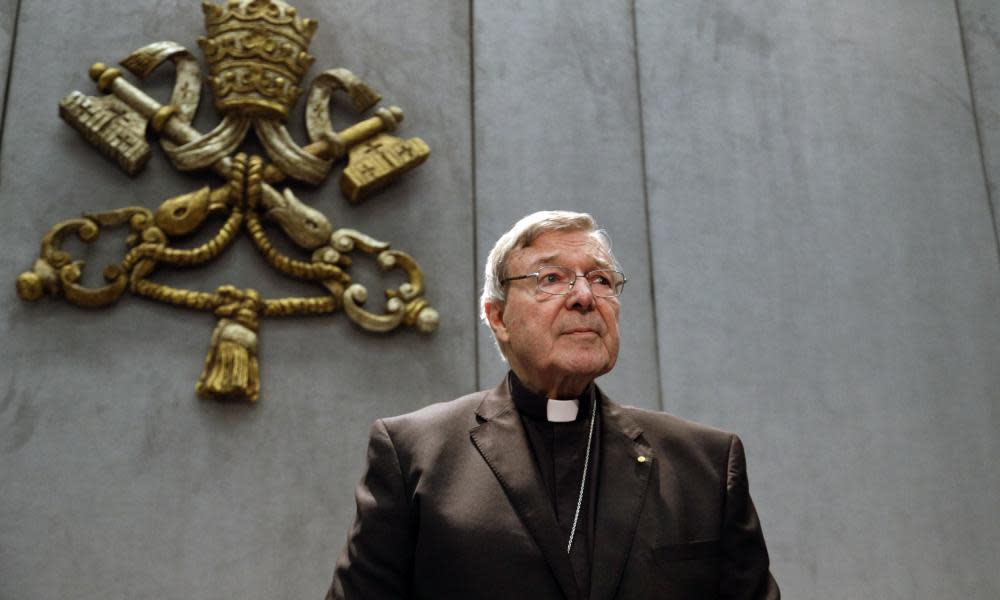Media companies must defend coverage of George Pell case, judge rules

Media companies will be forced to defend their coverage of Cardinal George Pell’s sexual abuse trial in the supreme court.
During a hearing of the court on Friday, Justice John Dixon declined to throw out the entire case, saying there was sufficient evidence that would allow the charges to be proven beyond reasonable doubt.
In doing so, he rejected submissions from the 27 media companies journalists and editors that they had “no case to answer”, paving the way for a trial next year.
However, Dixon did agree there was “no case” to answer in eight of the 87 charges and dismissed them.
Those sub judice charges were levelled against Queensland Newspapers Pty Ltd and Sam Weir (Courier Mail), Nationwide News Pty Ltd and Ben English (Daily Telegraph), Fairfax Media Publications Pty Ltd and Lisa Davies (Sydney Morning Herald) and Radio 2GB Sydney Pty Ltd and Chris Smith (2GB).
Dixon accepted their argument that publication was outside Victoria and had not achieved any “practical penetration” into greater metropolitan Melbourne.
However, those respondents are still set to face other contempt charges.
The corporations named on the respondent list include the Herald and Weekly Times, Nationwide News, Nine Entertainment, Advertiser Newspapers, Allure Media and Mamamia.com.au.
The trial is set down to begin on 28 January.
Lawyers for the media companies had earlier argued there was a “devastating, bazooka-size hole” in the case to prosecute the journalists and media organisations over their reports on Pell’s child sex abuse convictions, which were later overturned by the high court.
They called on Dixon to throw out all charges for both breach of the suppression order contempt and sub judice contempt.
But prosecutors argued the companies breached suppression orders and other reporting rules following the initial guilty verdict.
It was argued the print and online publications, radio and television reports, published between 12 and 14 December, could have prejudiced a second trial Pell was set to face. The case was later dropped.
Dixon said in his ruling on Friday he could “reasonably be satisfied that the evidence discloses a case to answer”, meaning the “the submission of no case fails”.
The news reports did not name Pell, but generally referred to a “high-profile Australian” who had been convicted in a case that the Australian “media can’t report”.
Related: Ibac won't investigate allegations Vatican funds were sent to Australia to frame George Pell
The court has previously heard there was division at the Age newspaper about the decision to publish an editorial criticising the suppression order.
Aside from alleging the coverage encouraged readers to seek out international coverage of the case, which was not bound by Victorian law, the prosecution also claims some publications breached suppression orders by reporting information “derived from the trials”.
In November, Crown prosecutor Lisa De Ferrari formally withdrew 13 charges against News Corp staff and publications over stories published after the cardinal was convicted of child sexual abuse offences in December 2018.
It took the trial nearly two years to begin, due to lengthy disputes between Victoria’s Office of Public Prosecutions and lawyers for the media companies.
Pell was acquitted of all charges by the high court on appeal in April and has since moved to Rome.


